KNOWLEDGESTREAM AT-A-GLANCE
The Future of Blockchain Within Supply Chains
ABSTRACT
Blockchain Strategies, Technologies and Applications in Supply Chain.
PARTICIPANTS















OBJECTIVES
1. :
2. :
3. :
4. :
End Date: Feb 26, 2018
CONTRIBUTIONS
ACTIVITY
181 Days
8 Themes
17 Contributors
762 Posts
240 Comments
231 Followers
OUTPUTS
None yet
THEME #1
Major Supply Chain Challenges
Current Challenges
a) Tracking flow of RM/WIM Parts/ Products/Finished Parts/Products for testing to different sites. b) Authenticity of those 3 party suppliers who undertake tests. c) Veracity of Results that those were tested against correct spec and the results are with in range and methodology. d) Transparency with which those results are shared irrespective of delays or cost shootup with all in the entire supply chain especially the OE who can re-tweak the schedule, optimize cost and be e) establish trust with internal and external customers.
We are now spoiled with accurate delivery data for our online purchases. That expectation and need have spilled over into the commercial market for supplies and materials...We need to start with frieght carriers updating their tracking (or rather making it public). This applies to Truck, Rail or Sea.
The major supply chain challenges that I see every day, are disconnects in the cross functional process, from the buy, make, distribute, store, sell that is the supply chain of today.
The challenge for the pharmaceutical industry is a legal requirement set forth by the Drug Quality and Security Act (DQSA). The FDA established the act to help insure the quality of drugs by tracking the finished product at the lot level through the supply chain from Manufacturers, Wholesalers, to Dispensers. The issues the industry has faced include: Agreeing on a format for existing bar codes. Since a 2 D bar code is added to the package, and the packages are typically small, the addition of a bar code has caused contemplation of a variety of options for bar codes. Existing scanner technologies in place for receiving and dispensing. Current hardware is scanner based and made to capture 1D bar codes. We will need to invest in new technology to comply with the law. Storage requirements for the vast amount of data and potentially retrieval. Since much of our data is currently stored on servers, we will need to move to the cloud or add servers. Each transaction will need to be stored for 6 years and retrievable in 48 hours.
Current Solutions
a) Honestly the process is not stringent and defects, errors are only scrutinized if there is major failure or recall. Manually or excel are maintained to track the samples for testing. b) 3 party agencies like SGS, Intertek are blindly trusted for the results and random audits are done to check the infrastructure or test facilities unknown agencies. c) Few OE's have a regress check or established protocol to define inhouse/outsourced tests that too only for critical parts however it has been observed that the non-critical or common parts across models are the major trouble maker for the entire system failure. d) Inhouse Parts / Product inspection teams are the source to establish transparency across the supply chain but no fool-proof system.
Blockchain based solutions
Block chain technology is extremely powerful because it allows a buying and selling process ( a transaction) to occur instantaneously....Similarly, the transaction will not occur if the buyer does not have the funds and/or the seller does not have the product.(and that becomes evident very rapidly which means that alternative suppliers(or players) will be sourced!)
a) Create a private blockchain, bring all onto the same platform irrespective of the legacy systems they are employing to perform the respective task.An interface through which all transactions are recorded with time stamp with all attributes such as which part, which assembly, Nos, which batch, which assembly line, what process, responsible person etc. In this way, we can completely track the movement from Supplier 1-->Testing agency-->Supplier 2-->OE-->Customer. b) All agencies can be authenticated with valid credentials (all legal docs, infrastructure details, hygiene etc) and registered on the Blockchain so the supplier and in-turn OE can visualize that the parts are tested at authentic and confidential place. c) All results are transferred from legacy/in house apps to Blockchain and basis one access can visualize the results, test conditions, spec followed , issues, time to achieve those results and be doubly sure that the tests were performed right and the results are authentic and also accordingly make improvements well before the actual results are shared. d) No need of inhouse or part inspection groups to audit the suppliers, testing agencies, parts and products.
We can establish complete tracking, transparency and trust through an efficient trustless blockchain system.
The Smart Contract facilities seem to bring a real value for the Supply Chains, but, as for any piece of code, they have to be validated in terms of: Effectiveness. the Smart Contract is effectively doing what it has been developed for, Legally acceptable: the Smart Contract action is backed that rules and laws, Efficiency: the Smart Contract is working in a cost and time acceptable way, considering also the environmental issues.
THEME #2
Leveraging Blockchain to Overcome Supply Chain Challenges.
Data Provenance/Prevention of Conflict Materials
Data Provenance or Track and Trace of a product etc. from craddle to grave is currently the biggest challenge which each industry wants to address through Blockchain.. the key cost and time savings. a) Reduced Paper Cost b) Reduced Audit or 3rd Party Cost c) Reduced Part and Product cost (Better Discounting by OE's , Suppliers as payments would be in nearly real time - we have discussed this before also). d) Reduced end to end Product development time e) Reduced verification and validation time Implementation time to Data Provenance will take..time depending on (the size) of your supply chain..More than the technology and process, bringing people (stakeholders) on blockchain is a real challenge.
Data Provenance is the fastest growing part of supply chain use today that I have seen. It (Blockchain) is a natural solution that addresses the issue better than existing solutions.
Connecting Data between Internal/External Systems
Blockchain might make more sense than SAP or Oracle in licensing fees alone! ;) Too, private blockchains guarantee immutability... A custom application built on SAP or Oracle would have a central point of data storage with security implications. It only takes one user (or deliberate, malicious actor) to ruin a system for an entire group. Blockchain avoids these concerns, natively.
Counterfeiting
If we leave the occidental world or major metros, 50% or more of the products, medicines people consume are either fake or counterfeited....Blockchain is an answer to counterfeiting or expired or non-authentic product, let me share with an example below. Along with Tracebility we can check the expiry of the drug...All these parties are on Blockchain sharing that platform to fill information at each step or it is electronically registered through a scanner or RFID attached to that drug which maintains the information...The same will be clearly come up in the wholesaler to pharmacy block of information and it will alert the pharmacy and the customer that the drug is no more good to be consumed.,,Blockchain can perfectly save us from the Counterfeiting issue.
Product Recalls
The obvious win would be complete provenance (tracking of ownership) from raw materials through finished product and to distribution point (ideally to the consumer-level). In the current facilitation of recalls, manufacturers simply notify the general public of a recall, often requiring the verification of serial numbers, production codes, or UPCs. In a perfect blockchain supply chain, the manufacturer would be able to target end-users directly, immediately reducing the consumer's chance of missing a dangerous recall (death by IKEA dresser...) . Additionally, we see recalls that tend to be "explosive" in nature. One product subset is expanded and expanded . Blockchain provenance would be completely transparent (even if the network excluded the general public) and allow for complete and thorough supplier identification.
Cold Chain
For the "Cold Chain" using a Blockchain solution is perfectly suited.. by recording temperature at timed intervals along the way... it allows for an undisputed record of the temperature the senors recorded at various intervals of the trip...This satisfies regulatory and contractural issues that are complex and costly today...Having a shared indisputable record of the temperature through the entire route will cause less disputes on the freshness of the product..I am seeing a pent up demand for this solution.
Walmart
As Piyush mentioned earlier, Walmart could position itself as a transparent seller to the customers but if the customers do not acknowledge this and hence do not display increased loyalty, going by Jorge's comment, it would be a non-RoI proposition and hence would not go ahead. On the other hand, Walmart's intent itself might earn it brownie points with customers without it actually needing to develop such a Blockchain.
.In my view Walmart will establish themselves as much a stronger and loyal brand to its consumers by employing Blockchain...This will set a new benchmark for all industries
For costs, Walmart and others have proven that using Blockchain saves verification time, saves entering information between incompatible systems, and overall cuts costs of verification down considerably. Implementation time of verification systems requires a lot of coordination .. Blockchain will not reduce that implementation time, especially the first time..used.
THEME #3
Incentives for Trade Partners
Advantages
The savings (reduction of infrastructure, ease of reporting, automation, inventory tracking, etc.) would be the draw for the company to subscribe, and the vendor launching this platform would charge some type of fee to participate in the network.
, if the collectivity is actively participating in trust building and not in speculating, the community will be benefits from the cost of the blockchain against the current transaction cost covered by third parties
In terms of the flows of the supply chain, I see the block chain being adopted primarly in the information flow specially because of the gain in visibility and transparency of each node.
Challenges
An incentive to join a blockchain is one that has already several partners...the early mover advantage is enormous if you can attract a first set of trading partners..but its difficult to (incentivize) them. Once you have a set of partners then it becomes easier to attract others. Financial return will be seen later on, by automation and dis-intermediation, but this will happen rather on the medium/long term.
For many companies, the idea of "running a blockchain node" and transacting in tokens (or other value-store) may be too foreign of a concept. Although I don't think the ecosystem will continue down a centralized set of decentralized actors, I do think this is a logical progression.
I think the finantial flow presents a bigger rejection to change due to the cash benefits of delaying payment to suppliers (cash to cash days) and the constant invoicing claims, credits, and changes.
Types of Incentives
What incentives will our trade partners would require to join our Blockchain ?. a) Commitment to maintain privacy,confidentiality and security of their data on our platform.We need build that trust and confidence by doing multiple PoC.Businesses run on trust and facts and not on hype. b) Help and step by step guidance and coaching to train their workforce about merits and demerits of this new technology. c) A logical approach to move and scale up their business to Blockchain. d) A collaborative deep dive study to understand the short term and long term investments and ROI. e) A vision and long term goal to achieve by moving to blockchain (e.g. We want to achieve 100% transparency and 2 hrs payment credit to our suppliers by 2022). f) Support in transitioning from current legacy infrastructure to new.
Two types of incentives for supply chain participants are becoming very clea.. both driven by money. The first is what Sweetbridge is putting together, payment at the point of receipt. Cutting out the need to 30/60/90 payment cycles, and adding another couple of churns of products as the money is returned to the suppliers faster so they can build more product. No more need for factoring. The second is the IBM model of being at the center of a supply chain network. IBM for the most part asks its participants to join for free...will pay for legacy integration. How does IBM make money? On a transnational basis for every block committed, they charge a transaction via Smart Contract in their network.
The other concept is the “tower of control” where a third party collects and maintains the data in a block chain technology, then as a service provides the end to end visibility to all the trade partners in the network (track, trace, requirement, forecasts, EPOS, etc), and even a financial flow. The third party charges each trade partner of the supply chain by either a fixed periodic fee, a pay as you use, or a combination of both. Now the trade partners are encourage to connect their systems to the third party block chain purely because once connected they will gain the end to end visibility and use it to their benefit.
THEME #4
Customer Involvement
Benefits to Customer
Tire Manufacturing companies (name not disclosed due to confidentiality) are working with leading leasing businesses to sell tires as a service, pay per use and also helping them reduce their over all operational cost ..The plan is to bring both parties along with 3rd party insurers into Blockchain so that all information is captured, stored securely without divulging private information and smart contracts can be executed in real time.
Benefits (Data they can capture) to OE and Regulatory bodies : Customer buying pattern for a particular product - both locally and globally Real time customer feedback as customer would surely be interested in providing what impact it had on using the same. Lot more data that a normal clinical research. Data for Regulatory bodies to take future decisions to approve on similar products.
For new technologies like the Blockchain, its all around when will the benefits be real? When the supply chain pays faster, Blockchain customers will jump on board. When customers no longer have to debate freshneess dates or followup on recals because they are not sure of where products were sourced from, and Blcokchain eliminates that , they will sign up. Savings that are passed on to customer will be the best way to entice them to use the Blockchain. I have worked on several mutiparty Blockchains and the end customers wanted to be part of it, as the cost savings were high. We did hide the customer sales data
Customer Data Acquisition
In a B2B kind of scenario, it is every supplier's dream to have a visibility on the demand, so any indication from the customer on how much (s)he would purchase in future...will help the supplier plan better. The customer gains through better delivery performance of the supplier that translates to a reliable supply and need for lower inventory levels.
This is what we will see on the block chains - the results of big data analysis, trend identification and predictive analytics, potentially pattern recognition, deep learning, cognitive thinking and AI. ..These customer insights become extremely important in guiding the block chain supply chain to be fulfilling the right products, and so we want to ensure we have the very best customer insights possible.
Supplier Incentives
Block chain will allow suppliers(of the boutiques, or to any outlet of any type including digital) to see that there are gaps in the offering, to understand what is selling(what's moving) and what is not, to potentially avoid stock outs and to modify their fill rates in real time... It will also bring less inventory required in the supply chain, so this will remove waste and cash.The AI will take the data and determine what that means for our raw material sourcing and purchasing, and our manufacturing scheduling, our transport and distribution networks and our ultimate delivery to clients, as necessary.
To get benefits of the Blockchain, my feeling is that it has to reach a massive adoption. From a Supplier point of view, it would be as beneficial as there would be a maximum of Customers connected. On the other hand, from a Customer point of view, this is the same. It has to deal with the two facets of the B2B relationship.
Benefits for Walmart - This is about being able to take action so quickly that in the event of an incident, the supply chain can continue on virtually uninterrupted with minimal disruption...collateral and reputational damage, ie minimal damage to Walmart, and their suppliers.
Challenges
My feeling is that we are still in the experimentation phase like the IBM with Maersk project, but still the key issues for massive adoption that is essential for the Blockchain are not totally solved, I mean: 1. Scalability, 2. Governance, 3. User Experience, 4. Energy Consumption, and 5. Legal aspects.
I think the best way to integrate customers in a blockchain is if the customers are not aware of any blockchain. A customer wants to solve problems, efficiently and cheap. The main concern was if a solution meets their demands.
THEME #5
Summing it All up
Blockchain Implementation
YOU WIN - I WIN. Work on a win-win situation,show them the value,make a joint investment,share the benefits to create a long lasting and trusted business relationship.
Identify the right client to start with and the right process within that clients various supply chains.
Its all about the benefits Frankly I would look at cases where the benefit of switching technology platforms look like a pure benefit from whatever angle.
In order to successfully execute a blockchain project, you absolutely need informed participants. ... Additionally, essential building blocks (terminology, network models) must be completely understood by all participants before these can be leveraged in such a way that delivers concrete blockchain benefits.
Other Thoughts
I think the benefits of tracking spoilage, reducing time to payment, irrevocable able evidence of shipment handling, etc. are the most compelling reasons I have seen in a long time. Working for IBM in 1999, I was one of several writers of a plan for a new company that we shopped to our competitors, and it became E2Open. The Blockchain benefits are far more compelling than we were then with E2OPen. As a result, I think you can bring the customers in with benefits, and even share some of the monetary wins with them. There is so much hype they will listen. If you use one of the Enterprise chains, without mining, the benefits are just too compelling to ignore.
The direct impacts..for the trade partners to join are: Reduced transaction costs Time savings Increase trust and security
As Blockchain technology is still in its infancy, government initiatives seem to me key for technology experimentation and awareness.
THEME #6
Phase II: Blockchain Beyond the Supply Chain
THEME #7
Selection of a Blockchain Solution-10
Points of Difference Between Platforms
What are the ways by which the individual platform is providing Security, Robustness, Transparency and Privacy.
What is or are the type of Consensus mechanisms are used for verification, what is the performance, privacy and asset transfer type for that particular platform.
Integration Considerations
One of the first questions would be the level of integration your company is ready to pay and/or develop from the use of a blockchain-as-a-service (baas) like IBM BlueMix, Microsoft Azur..., to the development of a full stack to access the services of a specific platform like Ethereum, HyperLedger...
THEME #8
Interoperability-8
















